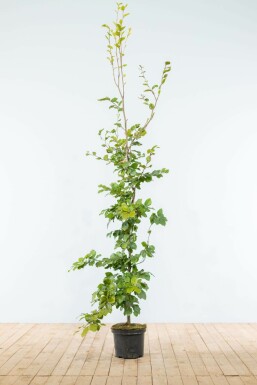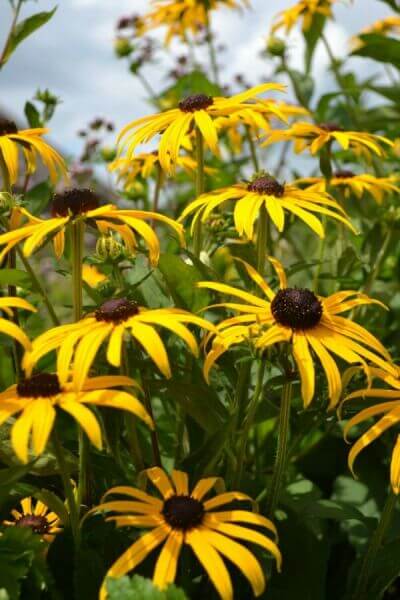Tall Hedging Plants For Maximum Privacy
Tall Hedging Plants For Maximum Privacy
Blog Article
Best Hedging Plants For Frosty Areas
Improve your garden's allure with lush hedge ranges such as Yew (Taxus), Thuja, Laurel, Photinia, and Bamboo, celebrated for their structural stability and ecological benefits.
Yew and Thuja provide evergreen protection and winter season durability, while Laurel offers rapid growth and broad, fragrant leaves.
Photinia includes seasonal appeal with its lively red foliage, and Bamboo provides a low-maintenance, tranquil ambiance.
These hedges improve air quality, minimize noise, and create tranquil, personal areas.
Appropriate planting, spacing, and upkeep make sure vigorous growth and ecological consistency.
Check out how these lavish ranges can elevate your garden's charm and well-being.
Secret Takeaways
Change Your Garden With Lush Hedge Varieties
- Select Yew for its dense, evergreen development and unequaled longevity.
- Choose Laurel for its quick development and broad leaves, making sure fast privacy.
- Select Photinia for its lively seasonal foliage, which turns a striking dark red.
- Make use of Bamboo for a low-maintenance, winter-hardy hedge with visual appeal.
- Space plants 2-3 per meter and prune regularly for optimum development and health.
Popular Hedge Plants
When changing a garden with lush hedge varieties, it's important to think about popular hedge plants such as Yew, Thuja, Laurel, and Photinia due to their distinct qualities and advantages.
Yew (Taxus) is extremely esteemed for its longevity and thick, green development, making it a prime option for sustaining landscapes.
Thuja is kept in mind for its evergreen foliage and robust winter season strength.
Photinia includes seasonal vibrancy with red leaves that darken with time, developing vibrant visual appeal.
Laurel offers fast growth and fragrant, broad leaves, suitable for fast privacy.
Additionally, Bamboo is an exceptional choice for ambiance, offering a low-maintenance, winter-hardy option that boosts the garden's visual with its classy, swaying walking sticks.
These choices cater to a variety of horticultural needs and preferences.
Advantages of Garden Hedges
Garden hedges use a wide variety of benefits, making them a valuable addition to any landscape. These natural barriers are cost-effective to execute and provide substantial wind defense, boosting air blood circulation and adding to noise decrease. The thick foliage of hedges like Thuja and Beech guarantees privacy by blocking visibility, developing a remote and serene environment.
Hedges also play an essential function in microclimate policy, providing a steady environment that promotes plant development and reduces temperature level variations. Their intricate leaf structures filter pollutants, enhancing air quality and contributing to a much healthier garden ecosystem.
Furthermore, hedges excel in sound decrease, absorbing and deflecting acoustic waves to lower ambient noise levels. This dual performance of offering both visual and acoustic personal privacy enhances the total tranquility and aesthetic appeal of any garden.
Planting and Upkeep Tips
For an effective hedge, meticulous preparation of the planting location is vital. Guarantee the soil has correct pH and drain to support strong root advancement.
Space the plants properly for the picked species. Water the hedge regularly during its preliminary growth stage, adjusting as required with seasonal changes.
Carry out a systematic bug control and disease avoidance method, using natural or chemical treatments when necessary. Routinely inspect for aphids, mites, and fungal infections.
Apply mulch to keep wetness and reduce weeds. Seasonal pruning promotes thick development and air circulation, essential for plant health.
Following these standards will assist you cultivate a lively, well-maintained hedge that improves the appeal of your garden.
Spacing and Trimming Standards
Spacing and Trimming Guidelines
Appropriate spacing and cutting are vital for cultivating healthy, aesthetically appealing hedges. Appropriate spacing makes sure each plant gets enough nutrients, light, and air flow.
Follow these standards for optimum hedge upkeep:
- Spacing: Position hedge plants 2-3 plants per meter to motivate robust growth.
- Pruning Methods: Routine pruning is essential for keeping wanted hedge height and shape. Cut brand-new development in summer season and cut down older wood during winter season.
- Seasonal Care: Change cutting approaches and schedules according to seasonal requirements to make sure plant health.
- Hedge Height: Frequently display and cut to preserve the desired hedge height and achieve consistent looks.
Following these actions will ensure your hedge flourishes, enhancing both the appeal and functionality of your garden.
Choosing the Right Hedge
Selecting the Right Hedge
Picking the appropriate hedge involves assessing elements such as fully grown height, foliage density, and environmental durability. Effective hedge plant choice requires understanding each species' development attributes and site-specific versatility.
For example, Yew (Taxus) uses outstanding durability and dense development, while Thuja is significant for its winter season resilience. Furthermore, thinking about upkeep requirements is vital; fast-growing species like Laurel or Privet demand routine cutting, whereas low-maintenance options like Bamboo or Ivy might be more suitable for those looking for minimal maintenance.
Environmental elements such as soil type, light availability, and moisture conditions ought to likewise assist the choice process. This careful technique makes sure the chosen hedges will prosper, supplying both visual and practical benefits to the garden landscape.
Shipment and Planting Guidance
To guarantee your hedge plants thrive, they need to be delivered by specialized couriers and planted without delay upon arrival.
Follow these important actions for successful planting:
- Soil Preparation: Improve the soil with raw material to improve drainage and nutrient content.
- Planting Depth: Develop a trench twice the width and equal to the depth of the root ball.
- Watering Methods: Water completely after planting, keeping the soil regularly wet but not filled.
- Mulching: Apply a layer of mulch to keep wetness and suppress weeds.
Consumer Support and Service
Provided the crucial role of prompt assistance in horticultural pursuits, our client support team is available six days a week through telephone, email, and social media to offer professional guidance and quickly resolve any concerns. Their dedication to quick action times guarantees customer complete satisfaction by fixing inquiries associated with plant health, optimal planting methods, and upkeep schedules.

Within two days
Within 24 hours
This detailed support group, reinforced by an outstanding 9.3/ 10 consumer rating, highlights our dedication to improving the gardening experience for every client.
Frequently Asked Concerns
The Length Of Time Does It Consider Hedge Plants to Develop?
Hedge plants usually require one to three years to end up being completely established, with the specific period differing by types and growing conditions.
Efficient care throughout this important period is essential for robust growth. Consistent watering, watchful weed control, and appropriate fertilizer application are essential in promoting strong root development.
For example, fast-growing species like Laurel might develop quicker, while slower-growing varieties such as Yew may take longer. Diligent upkeep accelerates the establishment procedure, leading to thick and healthy hedges.
What Are the very best Hedge Plants for Personal Privacy?
The concern of the best hedge plants for privacy involves evaluating evergreen and deciduous choices.
Evergreen hedges like Thuja, Laurel, and Cypress offer year-round protection, making sure continuous privacy.
On the other hand, deciduous hedges such as Beech use seasonal personal privacy, shedding leaves in colder months.
Key upkeep pointers for personal privacy hedges consist of regular trimming, fertilizing in spring, and appropriate spacing-- typically 2 to 3 plants per meter.
In addition, consistent watering and thorough weed elimination are vital for promoting healthy, thick growth.
Can Hedge Plants Draw In Wildlife to My Garden?
Yes, hedge plants can bring in wildlife to your garden by providing necessary advantages like shelter, food, and nesting websites, consequently improving local biodiversity. For instance, yew, holly, and laurel are exceptional for drawing in birds, while ivy supports a variety of pests.
Nevertheless, it's crucial to keep in mind that there are some drawbacks, such as increased maintenance to handle insects and regular upkeep. Thoroughly choosing and preserving hedge varieties can assist balance these benefits and downsides, ultimately promoting a sustainable and lively ecosystem in your garden.
Exist Any Flowering Hedge Plants Available?
Yes, there are flowering hedge plants available that can enhance the charm of your garden.
For example, Elaeagnus, likewise called Olive Willow, produces aromatic white flowers in the fall, adding a touch of elegance.
Photinia, another popular option, showcases dynamic red leaves that mature into a rich green, producing a vibrant visual result throughout the seasons.
To ensure these plants thrive, it's vital to practice correct pruning techniques and seasonal upkeep, such as trimming new growth in the summertime and cutting back in the winter.
These steps will assist keep the health and visual appeal of your flowering hedges.
How Do I Prevent Bugs in My Hedge Plants?
To prevent insects in hedge plants, employ natural insect control approaches and preserve proper hedge care. Present useful bugs like ladybugs, which prey on hazardous insects, to produce a well balanced community.
Frequently examine your hedges for signs of infestation and quickly remove any afflicted parts to prevent the spread. Guarantee the health of your hedges by using balanced fertilizers and providing adequate water.
Use mulching to keep soil wetness and appropriate spacing to minimize plant tension and promote robust growth. These practices jointly help in decreasing bug concerns and maintaining a healthy hedge.
Conclusion
In essence, choosing the ideal hedge varieties such as Yew, Thuja, and Laurel can transform any website garden into a serene sanctuary. These plants offer year-round plant, improve visual appeal, and offer useful advantages like noise decrease and wind security.
Appropriate planting techniques, precise spacing, constant watering, and seasonal trimming are crucial for ideal development.
Dependable shipment services and professional consumer assistance ensure a seamless experience from purchase to planting, making it simpler than ever to raise your outdoor area.
Garden hedges provide a plethora of advantages, making them an important addition to any landscape. These natural barriers are cost-effective to execute and provide significant wind protection, improving air flow and contributing to sound decrease. The thick foliage of hedges like Thuja and Beech ensures personal privacy by obstructing presence, creating a secluded and tranquil environment.

Pruning Strategies: Regular pruning is important for maintaining wanted hedge height and shape. Trim new development in summer and cut back older wood throughout winter season.
Report this page